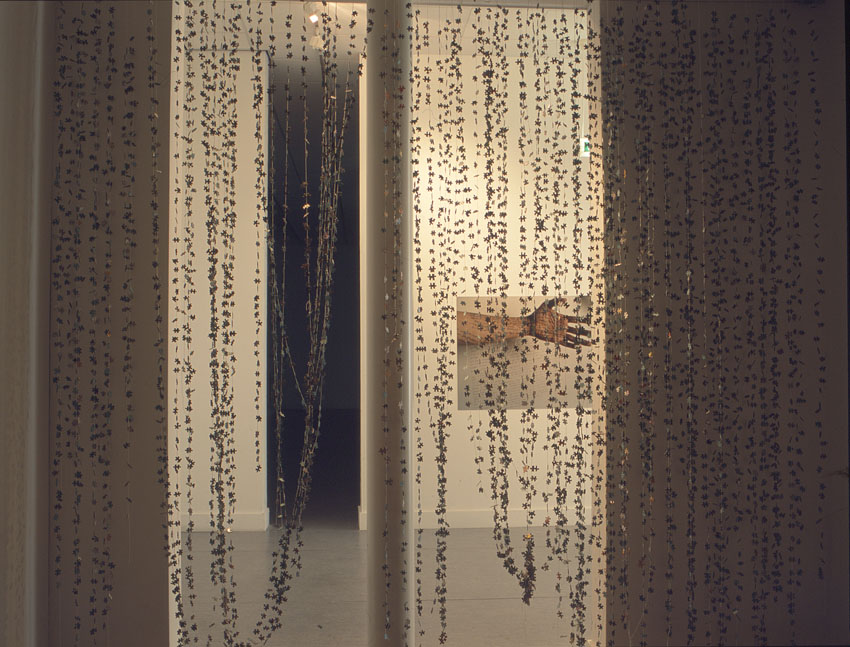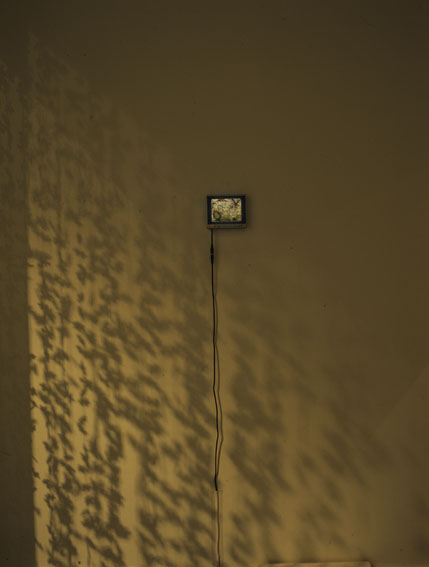 |
|||
| Of a Puzzled Europe, Ni Haifeng, 2004, 7000 pieces of jigsaw puzzles, string, sound, loudspeaker, vidoe, LCD monitor, installation at Museum het Domein, The Netherlands, 2004 | |||
| Of a puzzled Europe (project proposal)
In an in-between space conjoining the 'front part' and the 'back part'
of Museum het Domein, about 5000 pieces of jigsaw puzzles (of Europe)
are hanging from the ceiling tied with thin strings in a dense row forming
a curtain. The viewer has to bump into the screen in order to 'enter'
or 'exit'. Thus the museum is spatially conceptualized as a differentiated
topography, in the middle of which lies a 'demarcation' that simultaneously
connects and separates 'both sides'. The demarcation is a thin line
of 'the puzzled Europe'. Europe has always been a mythical concept, an 'imagined community',
to borrow Benedict Anderson's term, that is a product of modern age
and that has only flimsiest claim to common decent. Within this imagined
community, the members have to have a sense of other peoples who may
be inferior but must be recognized as human. Such is the basis on which
'Europe' is constructed: it simultaneously mythologizes itself and mystifies
'the rest'. In a Borgesian sense, Europe is, the "imperial map' that dictates the real territory, a construct fixed upon the 'shifting landmass'. In this light, my aim is to provoke a sardonic laugh at the representation of a place, at the artificiality of a cultural construct, by offering the viewer a curtain to bump into. For all of 'us' within Europe, we are provided a screen of a 'puzzled Europe' or a 'shattered Europe' to see, to feel and to traverse. If once the "Iron Curtain' guarded the free 'world', it is now ' the curtain of jigsaw puzzles' - a porous border that un-guards 'here' form 'there'. Ni Haifeng, 2004 |
|||
  |
|||
| Of a Puzzled Europe, Ni Haifeng, 2004, 7000 pieces of jigsaw puzzles, string, sound, loudspeaker, video, LCD monitor, detail view | |||